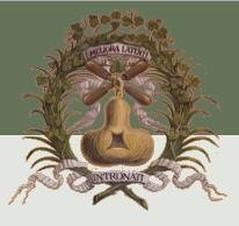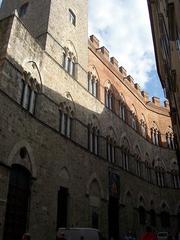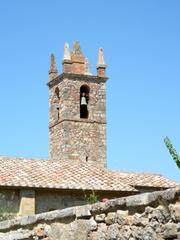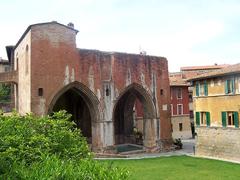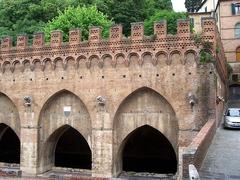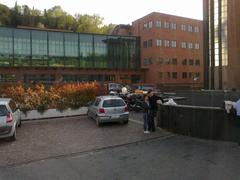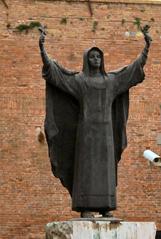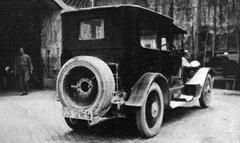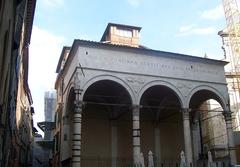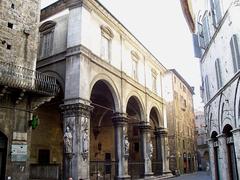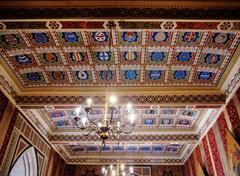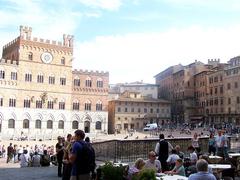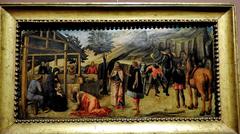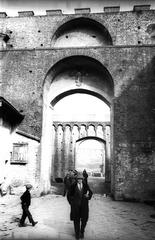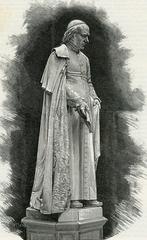Visiting Orto Botanico in Siena: Hours, Tickets, and Travel Tips
Date: 31/07/2024
Introduction
The Orto Botanico dell’Università di Siena, commonly known as the Siena Botanical Gardens, is a historical and scientific treasure located in Siena, Tuscany. Established in 1588 by the University of Siena, the garden has evolved from its initial purpose of cultivating medicinal herbs to become a center for botanical research, conservation, and education (Terre di Siena, Wikipedia). Spanning approximately 2.5 hectares, the garden houses over two thousand plant species from around the world, offering visitors a serene and educational experience (Lonely Planet). This guide provides comprehensive visitor information, including historical context, practical tips, and nearby attractions, making it an essential resource for anyone planning to explore this remarkable botanical garden.
Table of Contents
- Introduction
- History of Orto Botanico dell’Università di Siena
- Visitor Information
- Travel Tips
- Nearby Attractions
- Conclusion
- Frequently Asked Questions (FAQ)
- Call to Action
History of Orto Botanico dell’Università di Siena
Origins and Early Development
The history of the Orto Botanico dell’Università di Siena dates back to 1588 when the University of Siena initiated the cultivation of medicinal herbs. This early botanical garden, known as the Orto dei Semplici, was attached to the Hospital of Santa Maria della Scala and primarily served pharmaceutical and medicinal purposes (Terre di Siena). The garden’s initial focus was on growing plants that were essential for medical treatments, reflecting the period’s reliance on herbal medicine.
Transition to Natural History
In 1756, the garden’s focus shifted from purely medicinal plants to a broader scope of natural history. This transition marked the beginning of a new era under the direction of Giuseppe Baldassarri, who started to collect uncommon plants in 1759 (Wikipedia). The garden’s collection expanded significantly during this period, incorporating a variety of species that were not native to Italy.
University Reform and Expansion
The Grand Duke of Tuscany, Peter Leopold, initiated a series of university reforms in 1784, which had a profound impact on the botanical garden. These reforms led to a substantial increase in the garden’s collection, with more than a thousand new plants being added, many of which were sourced from abroad (Wikipedia). The first published record of the garden, known as the “Seminum Index Siena,” listed approximately 900 species, including several hundred from outside Italy.
Relocation and Modernization
In 1856, the botanical garden was relocated to its current site at Via Pier Andrea Mattioli, 4, in the verdant Sant’Agostino Valley (Lonely Planet). This move was part of a broader effort to modernize the garden and expand its facilities. The new location provided a larger area for the garden, which was further expanded in the 1960s, doubling its size to approximately 2.5 hectares (Wikipedia).
Contributions of Giuseppe Guerrazzi
The naturalist Giuseppe Guerrazzi played a pivotal role in the development of the Orto Botanico dell’Università di Siena. His contributions, along with those of other scientists and botanists, helped to expand the garden’s collection and enhance its scientific value (Itinerary Expert). Guerrazzi’s work laid the foundation for the garden’s current status as a center for research and education.
19th and 20th Century Developments
Between the 18th and 19th centuries, the garden saw the discovery and importation of numerous non-medical plant species to Europe. This period marked a significant shift in the garden’s function, transforming it into a botanical garden focused on scientific research and the conservation of plant and animal species (Terre di Siena). The garden’s layout, which combines 19th-century and modern styles, features artificial terraces, gravel paths, stone steps, and benches that provide visitors with a place to sit and admire the natural beauty.
The Botany Institute
The botany institute, constructed between 1910 and 1912, further solidified the garden’s role as a center for botanical research and education (Wikipedia). This institute provided the necessary infrastructure for advanced botanical studies and facilitated the garden’s expansion in the 1960s.
Modern Era and Current Status
Today, the Orto Botanico dell’Università di Siena is a thriving botanical garden that spans approximately 2.5 hectares and houses over two thousand plant species from around the world (Terre di Siena). The garden features several sections, including areas dedicated to the flora of Tuscany, as well as tropical and subtropical plants housed in greenhouses (Lonely Planet). It serves as a peaceful and beautiful place for visitors to stroll and enjoy the natural beauty of the plants.
Visitor Information
Visiting Hours
The Orto Botanico dell’Università di Siena is open daily, providing ample opportunity for visitors to explore its diverse plant collections. The visiting hours are typically from 9:00 AM to 5:00 PM, but it is advisable to check the official website for any seasonal changes or special events that might affect these hours.
Ticket Prices
Admission to the garden is free, making it an accessible and enjoyable destination for tourists and locals alike (Itinerary Expert). Donations are welcome and help support the garden’s maintenance and educational programs.
Accessibility
The garden is designed to be accessible to visitors with disabilities. Pathways are well-maintained, and there are ramps and accessible restrooms available throughout the site.
Guided Tours and Special Events
Guided tours are available upon request and provide an in-depth look at the garden’s history, plant collections, and ongoing research projects. The garden also hosts special events, such as plant exhibitions and educational workshops, which are perfect for both adults and children.
Travel Tips
- Best Time to Visit: The garden is beautiful year-round, but the best time to visit is during the spring and summer months when the flowers are in full bloom.
- What to Wear: Comfortable walking shoes are recommended, as the garden covers a large area with gravel paths and stone steps.
- Photography: Don’t forget your camera! The garden offers numerous photographic spots, from the lush greenhouses to the scenic terraces overlooking the Sant’Agostino Valley.
Nearby Attractions
While visiting the Orto Botanico dell’Università di Siena, consider exploring other historical sites and attractions in Siena:
- Piazza del Campo: One of Europe’s greatest medieval squares, known for its unique shell shape and the famous Palio horse race.
- Siena Cathedral: A stunning example of Italian Romanesque-Gothic architecture, featuring intricate marble floors and beautiful frescoes.
- Palazzo Pubblico: The town hall of Siena, home to the Museo Civico, which houses an impressive collection of art and historical artifacts.
Conclusion
The Orto Botanico dell’Università di Siena is a testament to the rich history and ongoing significance of botanical gardens in the study and conservation of plant species. Its evolution from a medicinal herb garden to a modern center for botanical research and education reflects the broader trends in botanical science and the importance of preserving biodiversity for future generations. Plan your visit today and immerse yourself in the natural beauty and historical richness of this remarkable garden.
Frequently Asked Questions (FAQ)
Q: What are the visiting hours for the Orto Botanico dell’Università di Siena?
A: The garden is typically open daily from 9:00 AM to 5:00 PM. However, it is recommended to check the official website for any seasonal changes or special events that might affect these hours.
Q: Is there an admission fee to visit the garden?
A: No, admission to the Orto Botanico dell’Università di Siena is free. Donations are welcome and help support the garden’s maintenance and educational programs.
Q: Are guided tours available?
A: Yes, guided tours are available upon request. These tours provide an in-depth look at the garden’s history, plant collections, and ongoing research projects.
Q: Is the garden accessible to visitors with disabilities?
A: Yes, the garden is designed to be accessible to visitors with disabilities. Pathways are well-maintained, and there are ramps and accessible restrooms available throughout the site.
Call to Action
Stay up to date with the latest news and events from the Orto Botanico dell’Università di Siena by following us on social media and checking our official website. Download our mobile app for an interactive map and guided virtual tours, and don’t forget to check out our other related posts for more travel inspiration!
References
- Terre di Siena. Naturalistic Attractions: Botanical Museum of Siena. Retrieved from Terre di Siena
- Wikipedia. Orto Botanico dell’Università di Siena. Retrieved from Wikipedia
- Lonely Planet. Orto Botanico dell’Università. Retrieved from Lonely Planet
- Itinerary Expert. Orto Botanico dell’Università di Siena. Retrieved from Itinerary Expert
